Nothing puts a blemish on a new mama’s day than the arrival of a baby rash.
The possibilities are endless, but your quest for answers doesn’t have to be.
Let’s have the conversation.
It’s easy to be alarmed if you suddenly notice a rash on your baby’s otherwise perfect, smooshable skin.
But fear not, mama.
There are many different types of baby rash, and more often than not, they’re nothing to worry about.
And, more importantly, they’re easy to treat.
Phew.
Here’s the lowdown on all things baby rashes, from the most common to the signs a doctor’s trip is in order.
In this article: 📝
- Why does my baby suddenly have a rash?
- What are the common rashes in babies?
- When should you be concerned about a rash on a baby?
- What does a viral rash look like on a baby?
- How can I treat my baby’s rash at home?
Why does my baby suddenly have a rash?
First things first, a baby rash doesn’t always necessarily mean illness.
With skin so new and delicate, your baby is bound to develop a rash at some point in their young lives.
And while these are often harmless, uncovering the why can be frustrating and panic-inducing
Especially if baby is showing any signs of discomfort.
Some of the most common reasons your baby is breaking out could be:
- Irritation from fragranced soaps, detergents, baby wipes, or sunscreen
- Heat
- Friction
- Dampness
- Diaper rash
- Baby allergies
- Fungal, bacterial, and viral infections
If the last one has you feeling particularly nervous, that’s OK.
Read on as we explore each of these in detail below.
What are the common rashes in babies?
There are many kinds of baby rashes with many different causes, but there are a few types of baby rashes that are most common.
These are unlikely to be accompanied by any other sign of illness and often have a distinctive look that is easy to spot once you know what to look for.
To help get you there faster – and closer to you and baby feeling comfortable – we break down the skin rash types, their looks, and treatments.
Starting with:
Baby Acne
Yes, that’s right.
Baby acne is a real thing.
Also known as neonatal acne, it affects around 20% of newborns, and will often appear around 2 weeks of age.
At this age, it isn’t anything to worry about.

What does baby acne look like?
Keep an eye out for small red spots on baby’s skin, typically along the forehead, nose, and cheeks.
Many parents often confuse neonatal acne with milia – an equally harmless newborn skin condition.
The biggest difference is milia tends to look like little white bumps while acne is often red.
How do you clear up baby acne?
Neonatal acne looks concerning, but the good news is it’s not uncomfortable and doesn’t require any treatment.
The best thing you can do is wait for it to clear up on its own (we promise it will) and find comfort that baby will be left with no lasting scars.
Cradle Cap
Cradle cap appears on the scalp, face, and sometimes behind the ears.
It tends to look like oily, scaly patches.
But don’t worry, it’s totally painless and quite common in newborns.
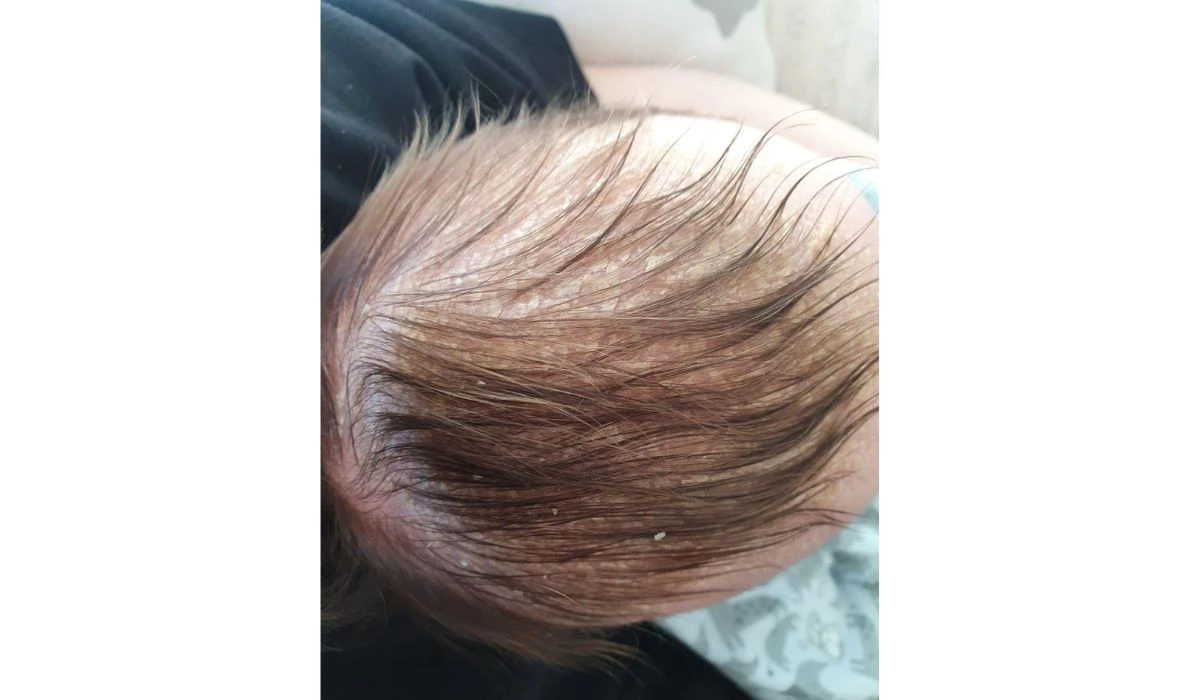
What does cradle cap look like?
Cradle Cap appears as yellowish, greasy, flaky areas of skin.
It can even look white and have slight redness.
But the most tell-tale sign is the oily skin.
How do you get rid of cradle cap?
No treatment is required, but you can gently rub away the flakes if you want.
Diaper Rash
If your baby’s diaper area is red and it causes discomfort to your little one during diaper changes, this is diaper rash.
Dampness from a baby’s diaper can irritate the skin, and some babies with very sensitive skin may even be irritated by fragrances or ingredients in baby wipes.
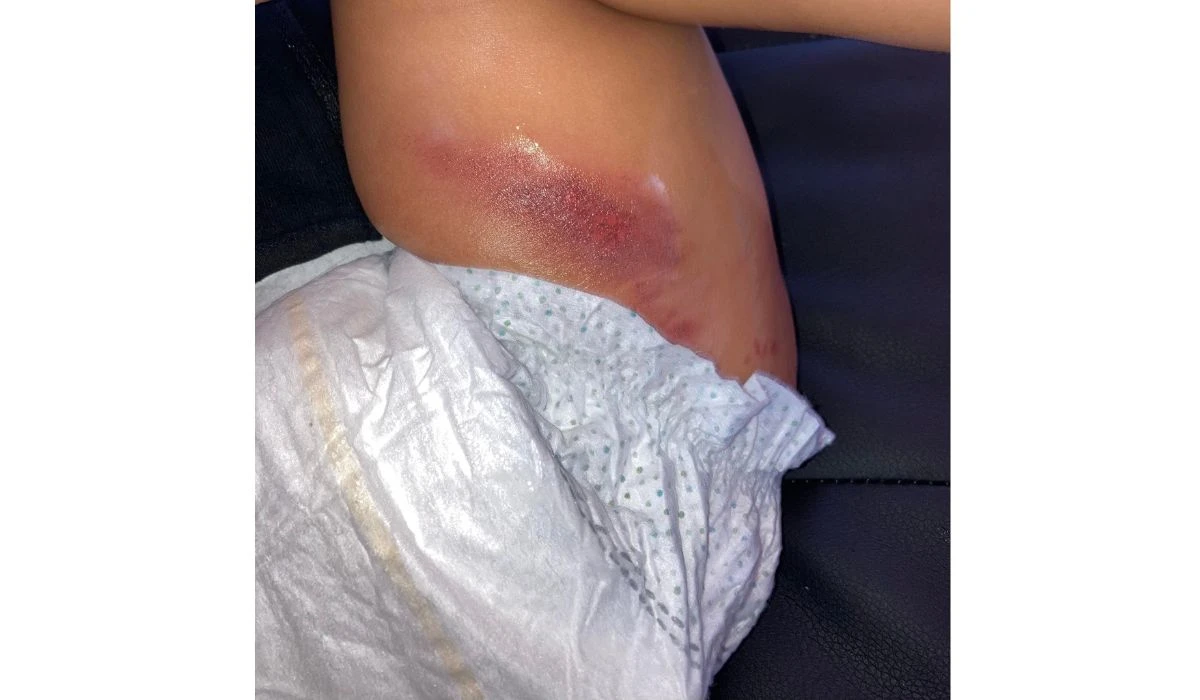
What does diaper rash look like?
Keep an eye out for red patches or bumps around your baby’s diaper area.
There may be some flaky skin, but often the area will look puffy and feel warm.
Not to mention baby will not be happy come diaper-changing time.
What cures diaper rash fast?
Keeping baby’s skin clean and increasing diaper changes is the surefire way to kick diaper rash out the door.
You’ll want to keep moisture to a minimum and enlist a recommended diaper-rash cream to soothe baby’s sensitive skin.
Drool Rash
Put simply, drool rash is an irritation caused by excess moisture around baby’s mouth.
As you can imagine, teething is prime time for drool rash thanks to all that extra saliva.
But it’s also common around the two-to-three month period when baby first starts developing their salivary glands.
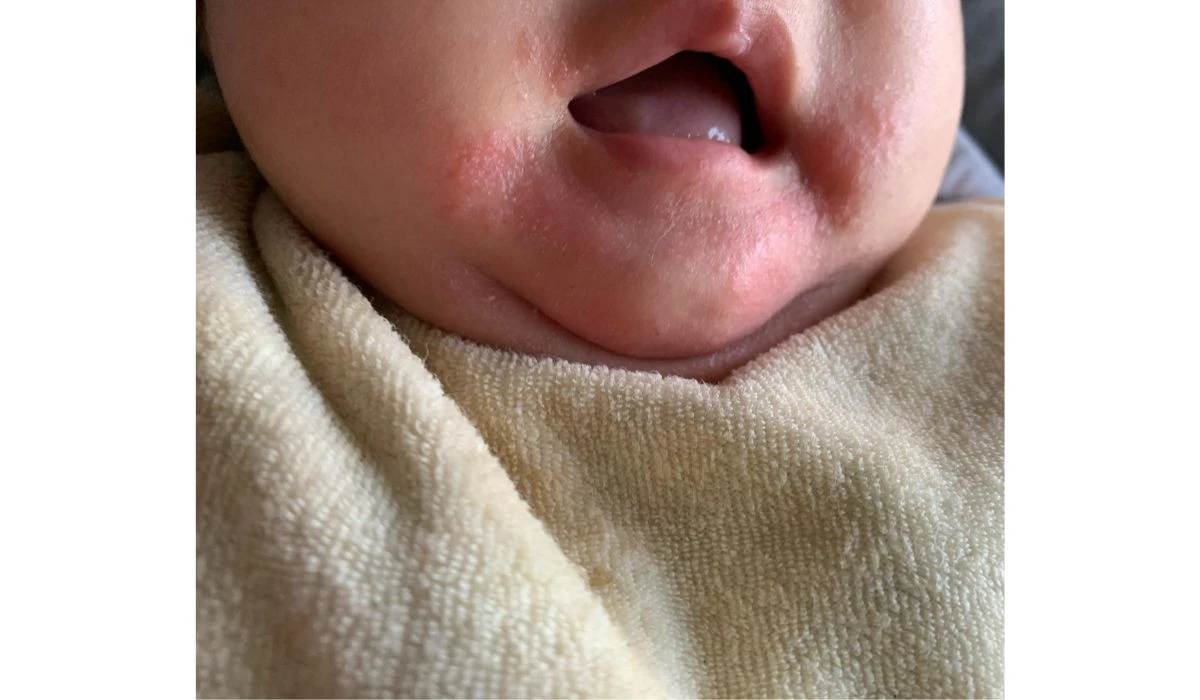
What does drool rash look like?
The skin around baby’s mouth, chin, and neck might appear red, dry, and irritated.
How do you fix a drool rash?
This is teething rash territory so keep a bib handy to gently dry the skin as needed.
You can also use an over-the-counter barrier cream or healing ointment to protect baby’s skin from saliva as it recovers.
Eczema
The most infamous of baby rashes, eczema is actually the name of several conditions where the skin becomes red, flaky, and itchy.
Cradle cap is one of them – albeit without the itching.
Often appearing as a baby rash on the face, backs of the knees, or arms, sometimes there’s no specific cause of eczema.
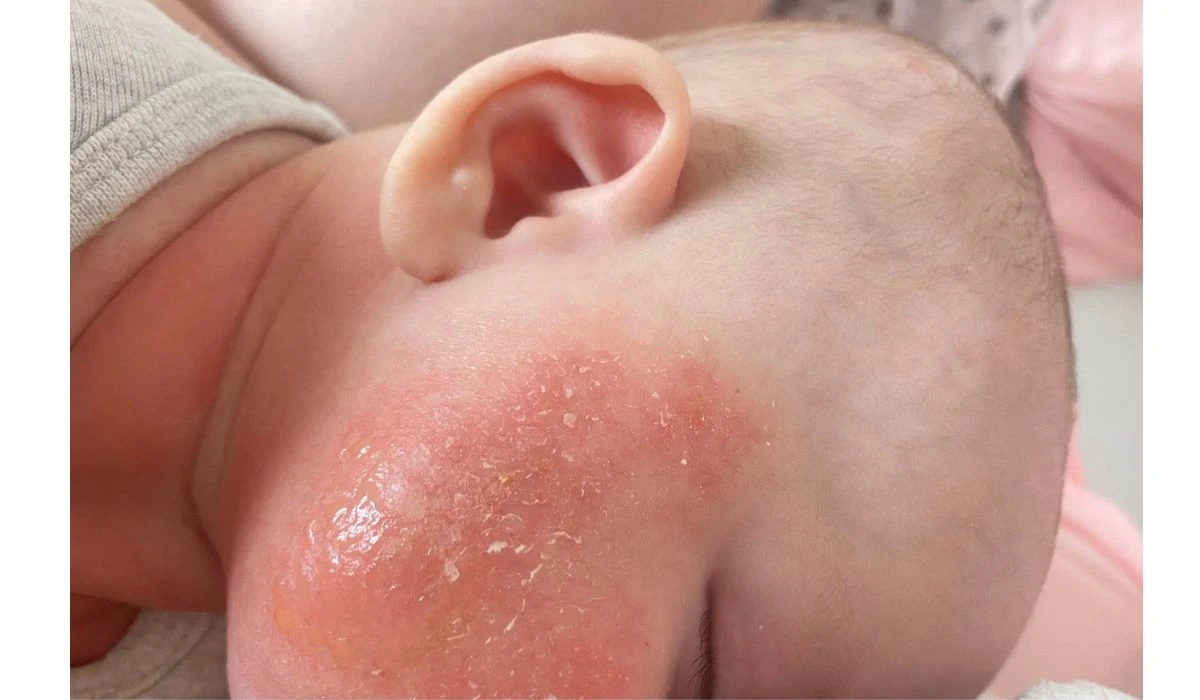
What does eczema look like?
If you notice dry scaly patches of red skin, your little one might be suffering from baby eczema.
In the first six months of baby’s life, this can look red with a bumpy rash.
Once baby starts crawling, eczema can spread to the elbows, knees, and legs.
How do you treat baby eczema?
The causes of eczema can range from allergies to basic irritants which means a visit to your pediatrician is a must.
From there, they can suggest a suitable treatment to keep your baby’s eczema triggers at bay.
Heat rash
More common in hotter climates and warmer seasons, baby heat rash is when baby’s sweat glands become blocked and inflamed.
Also known as prickly heat (a fitting title), this type of baby rash usually appears on baby’s skin folds, neck, and diaper area but can spread anywhere.
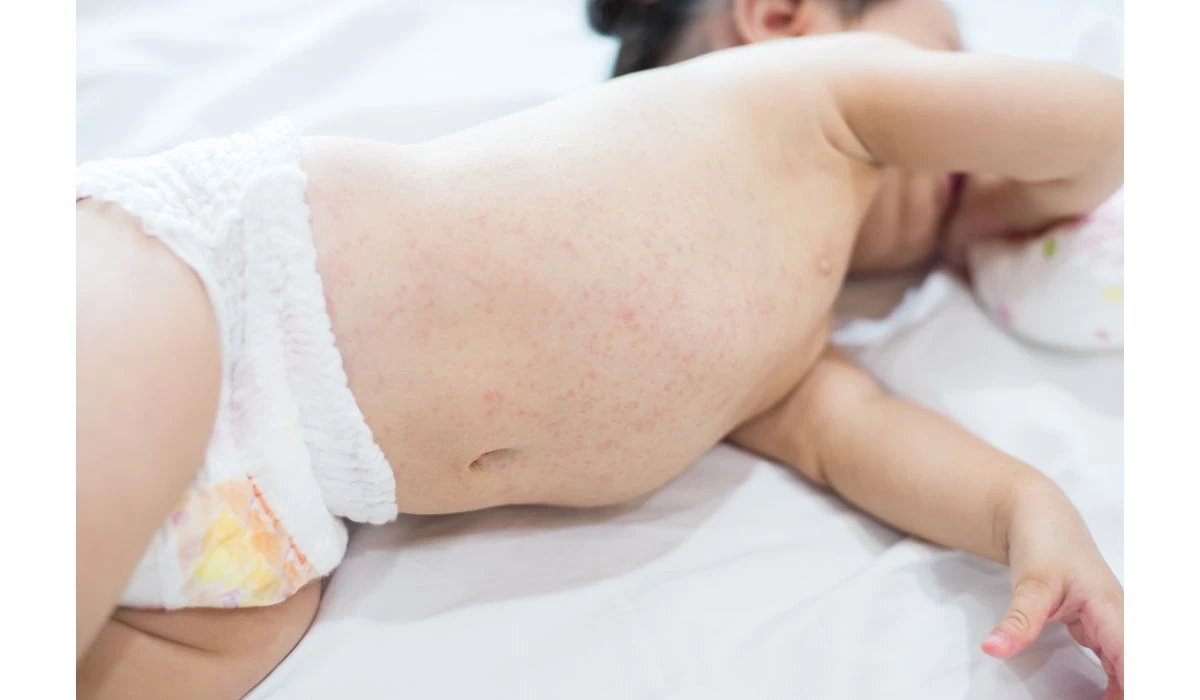
What does a heat rash look like?
Many of us have had a heat rash before, so you may well recognize that itchy pink/red rash on your baby’s body.
Think less baby acne and more like tiny blisters or tiny red dots on the skin.
How do you treat heat rashes
Keeping cool is the name of the game.
We’re talking fans and naked crawls or a nice nude lie-down.
Unlike other baby rashes, we recommend not reaching for the ointments and lotions as these may block baby’s pores even more.
Ouch.
When should you be concerned about a rash on a baby?
So when is a baby rash a symptom of something more?
Here are a few tell-tale signs to keep an eye out for:
- Your baby has a rash accompanied by a fever
- Their rash lasts for over a week
- The rash is spreading and causing discomfort
These could signal that there is an illness or underlying cause of the rash which should be diagnosed by your baby’s doctor.
Let’s look at some possible culprits closer:
Meningitis
When we think of dangerous baby rashes, many of us will automatically think of meningitis.
If your baby is showing the following signs, it is recommended you call emergency services or go to your nearest emergency department:
- A red, non-blanching rash (a rash that doesn’t fade when pressed with a finger)
- A stiff neck
- A fever you can’t control
- They’re bothered by light
- Uncontrollable shaking
- They have unusually cold hands and feet
- They seem confused
- Vomiting
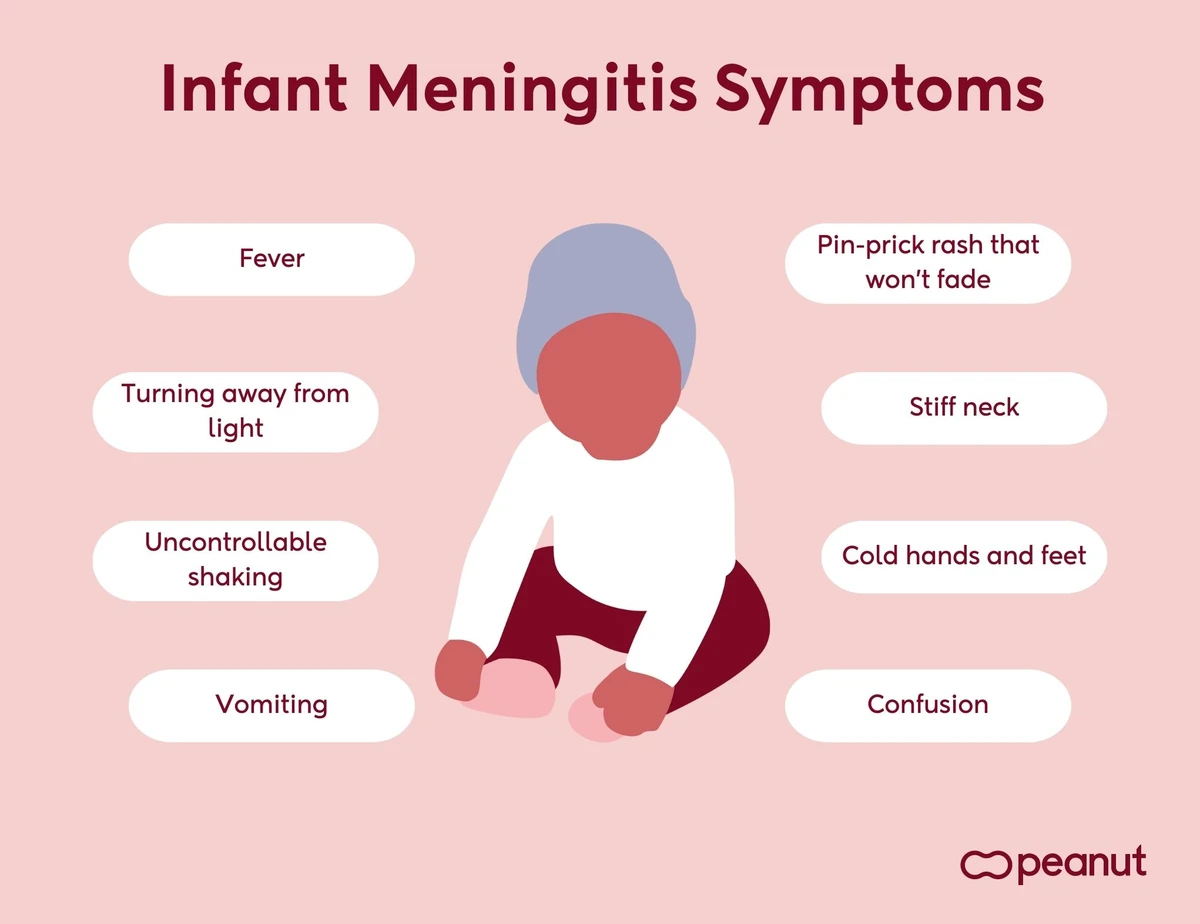
What does a meningitis rash look like on a child?
Meningitis rash shows up as pinpoint red dots on skin – what looks like a petechial rash.
Even more tellingly, it doesn’t fade when you press with a clear glass and tends to develop into what looks like dark purple bruises.
The rash can be harder to spot on darker skin but should be visible in paler areas like the palms or soles of the feet.
Baby allergic rashes
If your baby has an allergic reaction, they may get an allergic rash, also sometimes known as hives.

What does baby allergy rash look like?
Hives often appear as red raised bumps on the skin and can appear immediately after contact with an allergen or sometimes hours later.
If the allergic reaction is accompanied by any kind of respiratory distress, this may be a severe reaction called anaphylaxis and requires emergency medical treatment.
What does a viral rash look like on a baby?
When it comes to potentially dangerous rashes meningitis and allergies are on the top end of the scale.
But there is a whole other range of baby rashes that can be accompanied by cold and flu symptoms, a loss of appetite, fever, and other signs of illness.
These are generally known as viral rashes and are contagious.
Your baby will probably have other symptoms making them unwell before the rash appears or even while the rash is visible.
It all sounds scary and, in the moment, your fears are definitely valid.
But what we can tell you is that even though these types of baby rashes will need medical advice and/or treatment, they’re not always a cause for immediate concern.
Let’s tackle the most common causes together:
Hand, Foot & Mouth Disease
This is a common virus among infants and young children under five and tends to last for up to ten days.
It may appear as a rash of blisters on the hands, feet, and around and inside the mouth, with fever and cold symptoms.
Don’t worry, most children tend to experience mild symptoms, and they will pass on their own.
If they do stretch past the ten-day mark or become more severe, reach out to your doctor.
5th Disease
Also known as “slapped cheek” syndrome, 5th disease can cause bright red patches of rash on the cheeks of your little one, accompanied by a fever.
It typically clears up within three weeks.
Measles
Due to the widespread vaccination, measles is the least common and most preventable virus.
Its cold and flu symptoms usually kick in about 10 to 14 days after exposure, followed by a rash of flat, red spots around baby’s hairline.
Chickenpox
Another viral infection relatively uncommon thanks to routine vaccinations.
Chickenpox is known for its rash of itchy blisters across the head and torso, usually accompanied by a fever.
Roseola
A virus that is most commonly seen in children under the age of 2, roseola often starts with a rash of small pink-colored dots on the belly.
These then may spread to other body parts, along with a high fever and cold symptoms.
How can I treat my baby’s rash at home?
Different types of rashes require different treatments, so there is no “one size fits all” approach to treating baby rashes.
Prevention can be the best way to lessen the risk of your baby developing rashes, like keeping them in the shade, using hypoallergenic products, staying hydrated, and using a baby-safe sunscreen.
Following these simple steps can also help:
- Change diapers frequently
- Using fragrance-free or sensitive laundry products and soaps and shampoos specifically designed for delicate baby skin
- Keep baby’s skin clean and dry
- Dress your baby appropriately for the weather
- Keep your baby away from others with contagious illnesses
It can be difficult to know how to respond to your baby developing a rash, but more often than not, it’s not a cause for major worry.
While this guide outlines some of the most common types of baby rash, there are other causes and types that may need diagnosing and treatment.
If ever you’re unsure, it’s best to speak with your doctor.
Odds are, you’re not the first call they’ve had that day about baby skin rash!
And if you need a little reassurance, the Peanut community is only a tap away.

